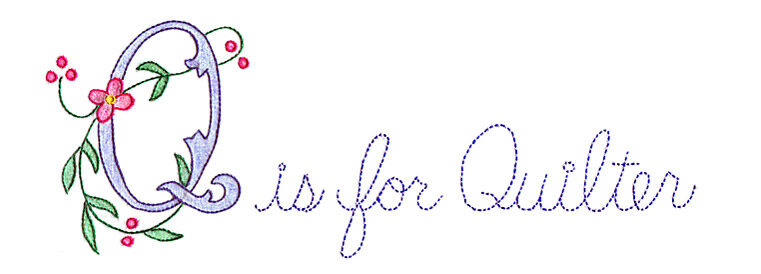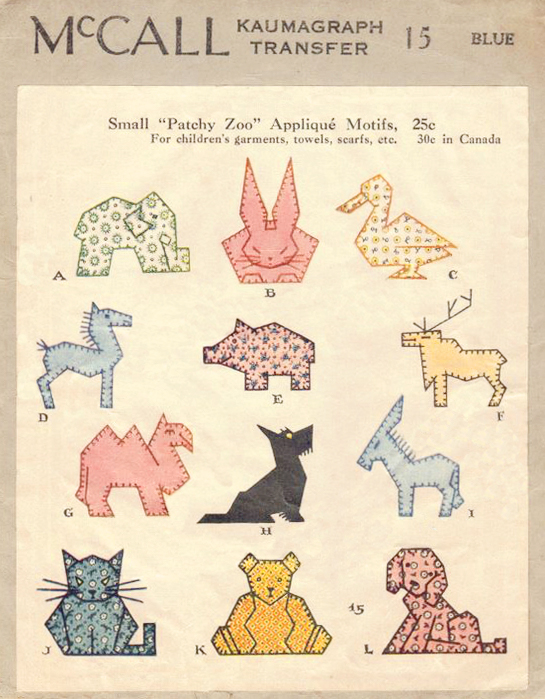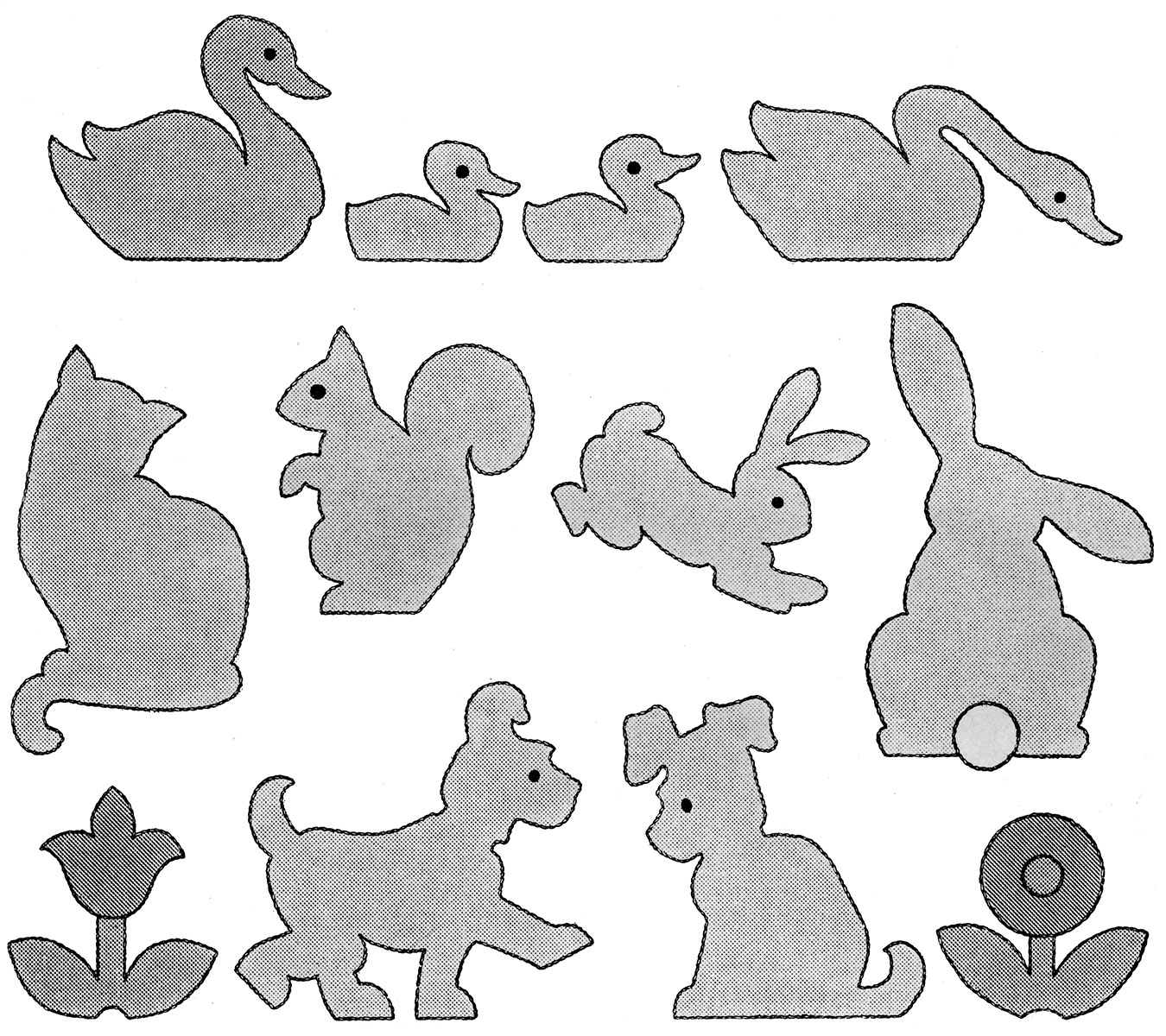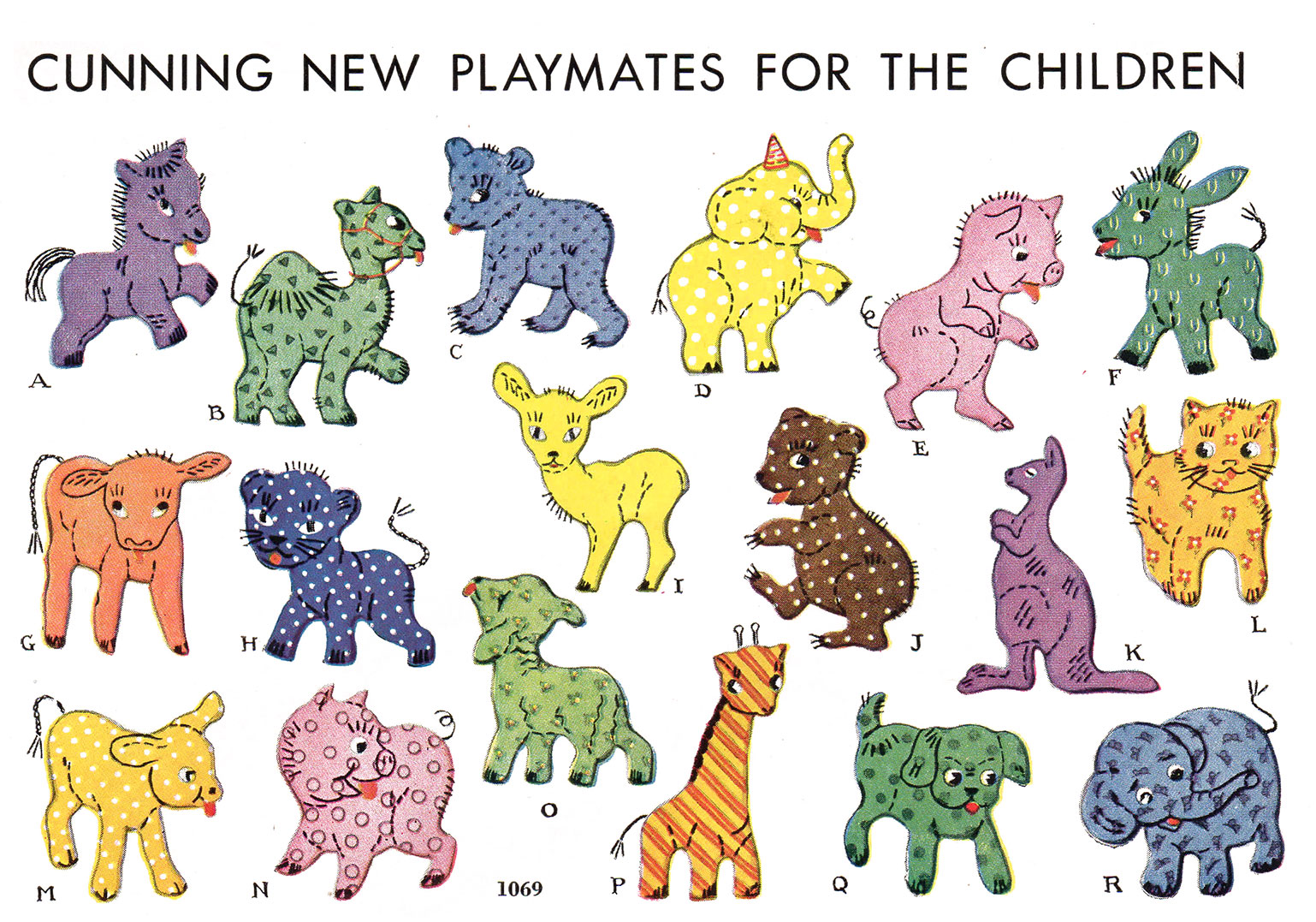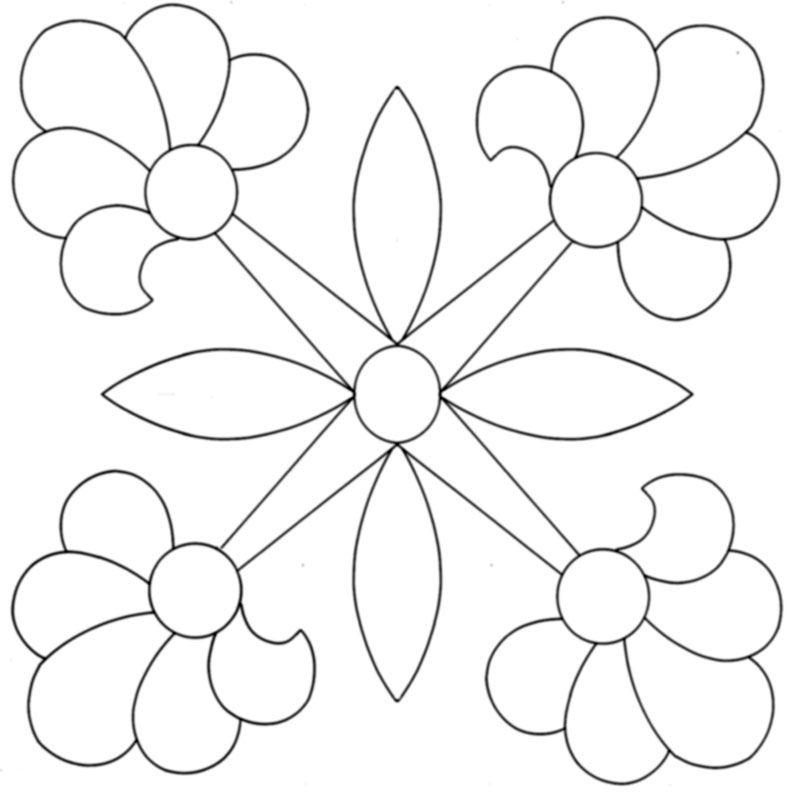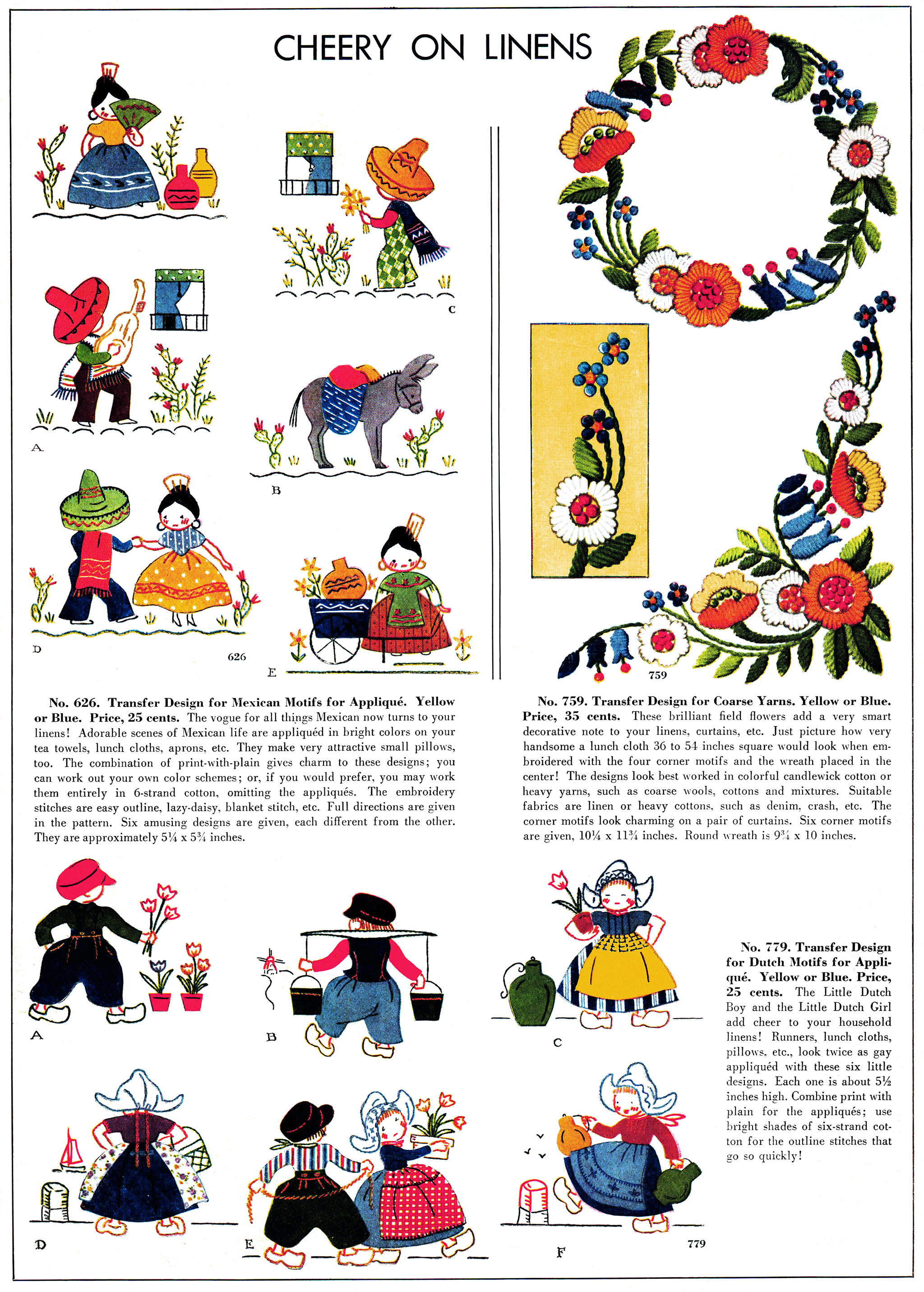Click on the image to view, download or print the instruction sheet and patterns for these cute appliquéd animals with embroidered details.
Tag: applique
McCall’s Monday — Appliqué Animals
McCall’s 1462 — Pattern contains 13 different designs from 4 to 8 1/2 inches high. May be stamped on heavy paper, then traced around on colored material. Delightful for nursery curtains, quilts, etc. Click to enlarge individual images below
McCall’s Monday — Appliqué Animal Designs
I was so pleased to see this pattern in my catalog, because I was able to identify 15 vintage quilt blocks I had purchased in this pattern. Later I found the original pattern, so for this McCall’s Monday I’m able to provide scans of the actual transfers. The pattern instructions from the envelope back are located…
Free Pattern Friday — Four Rose Appliqué Blocks
These traditional rose patterns appeared in the Aug/Sept, 1987 issue of Lady’s Circle Patchwork Quilts magazine. The original pages were only one-quarter of each 16″ block, but I have photoshopped them so you can see the whole design. Clicking on the images below will open a pdf version of the original one-quarter pattern, which you can download, print, and…
McCall’s Monday – Appliqué and Embroidery on Linens
I’m always trying to figure out a way to duplicate these patterns from the very small images on the catalog pages. These Mexican motifs seemed like they would copy easier if they were in grayscale, so I changed them. Click on the images to enlarge.
McCall’s Monday — Child’s Appliquéd Quilts
I’ve added individual images of the appliquéd animals in #1101, just in case you’d like to try printing and tracing the patterns.
